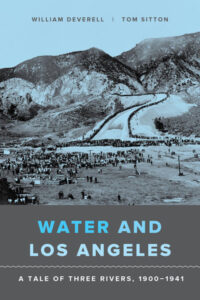 Up late one night reading Carol Grant Gould’s enchanting The Remarkable Life of William Beebe; Explorer And Naturalist, I happened upon the story of Beebe meeting Henry Gaylord Wilshire, the somewhat eccentric socialist millionaire for whom Wilshire Boulevard in Los Angeles is named (because he owned the property upon which much of it was constructed).
Up late one night reading Carol Grant Gould’s enchanting The Remarkable Life of William Beebe; Explorer And Naturalist, I happened upon the story of Beebe meeting Henry Gaylord Wilshire, the somewhat eccentric socialist millionaire for whom Wilshire Boulevard in Los Angeles is named (because he owned the property upon which much of it was constructed).
The story, for this purpose, isn’t important; what is is that it set me to thinking about the conundrum that is Los Angeles; the people behind the names immortalized there, and the land before it was paved over and those names applied to the new geography.
Those unfamiliar with this southern California metropolis may be surprised to learn that it came to be, and is what it is today, as the result of the presence of three rivers: the Los Angeles, the Owens, and the Colorado. The crucial role these three rivers played in the city’s growth can be discovered in William F. Deverell’s and Tom Sitton’s 2016 book Water and Los Angeles; A Tale of Three Rivers, 1900-1941.
And, in a remarkably generous gesture by the University of California Press, Water and Los Angeles is not only available in paperback but can also be downloaded for free through their Luminos online site.
If you enjoyed reading this, please consider signing up for The Well-read Naturalist's newsletter. You'll receive a helpful list of recently published reviews, short essays, and notes about books in your e-mail inbox once each fortnight.
